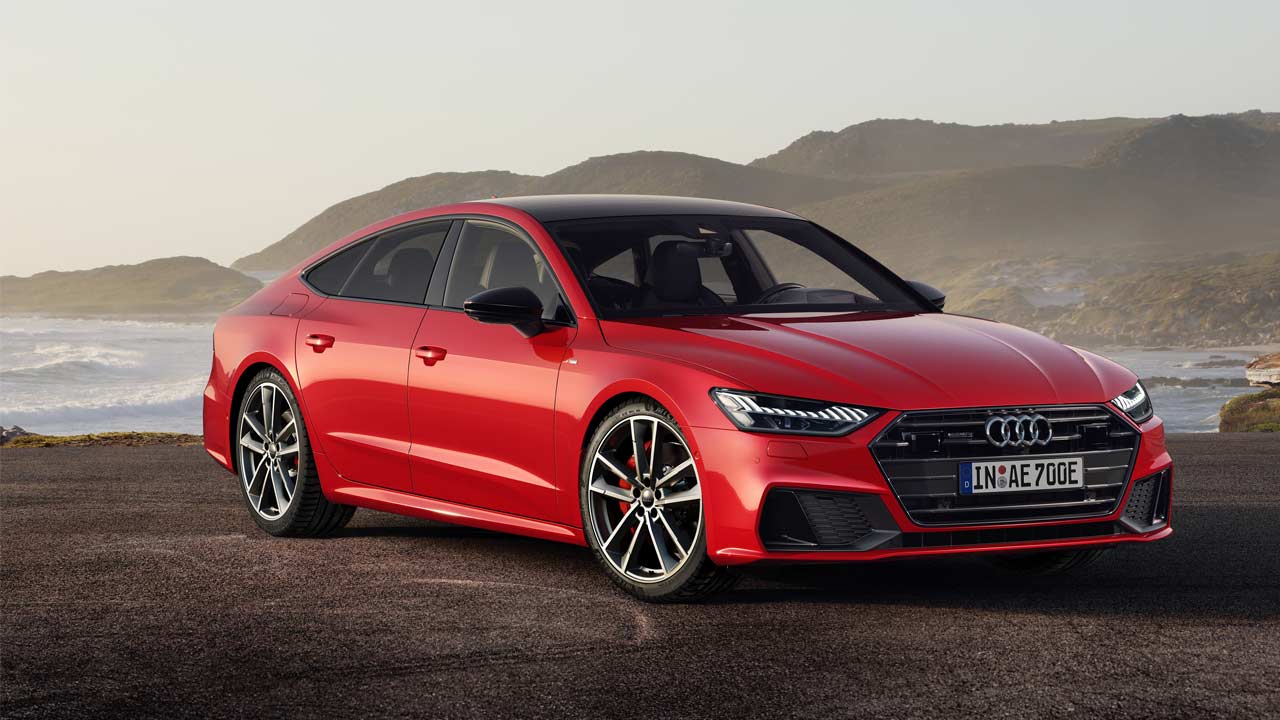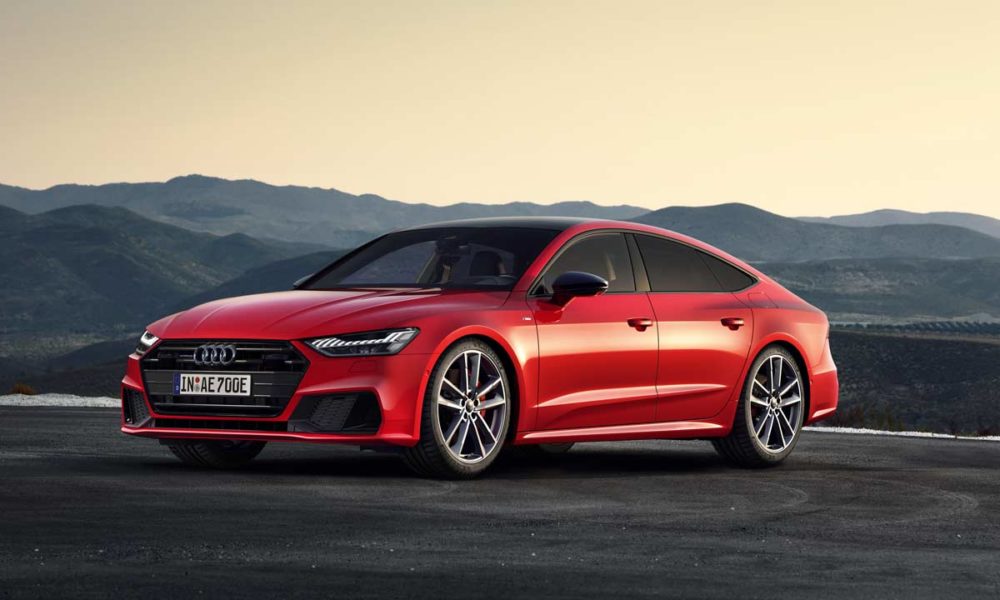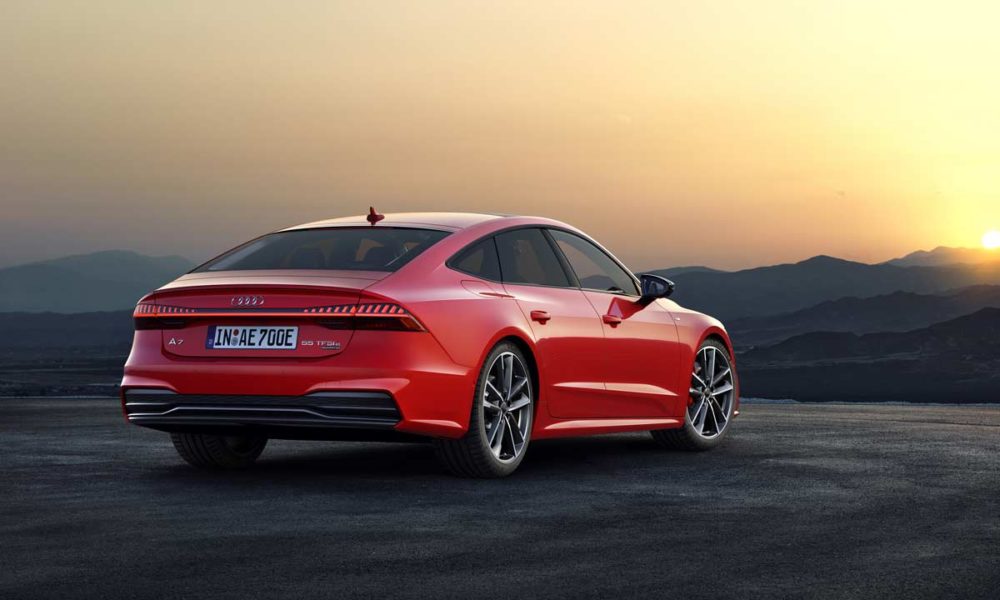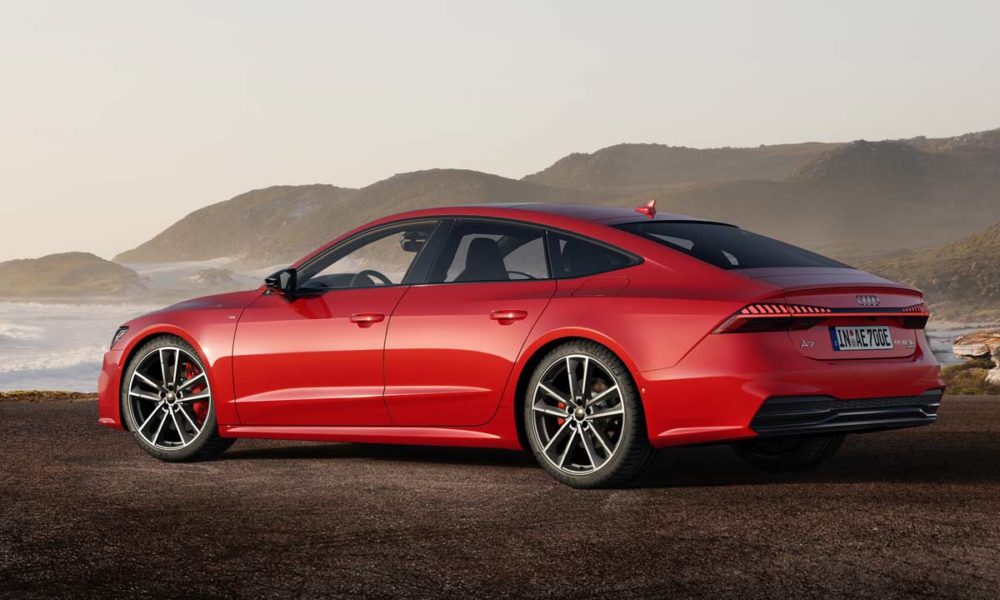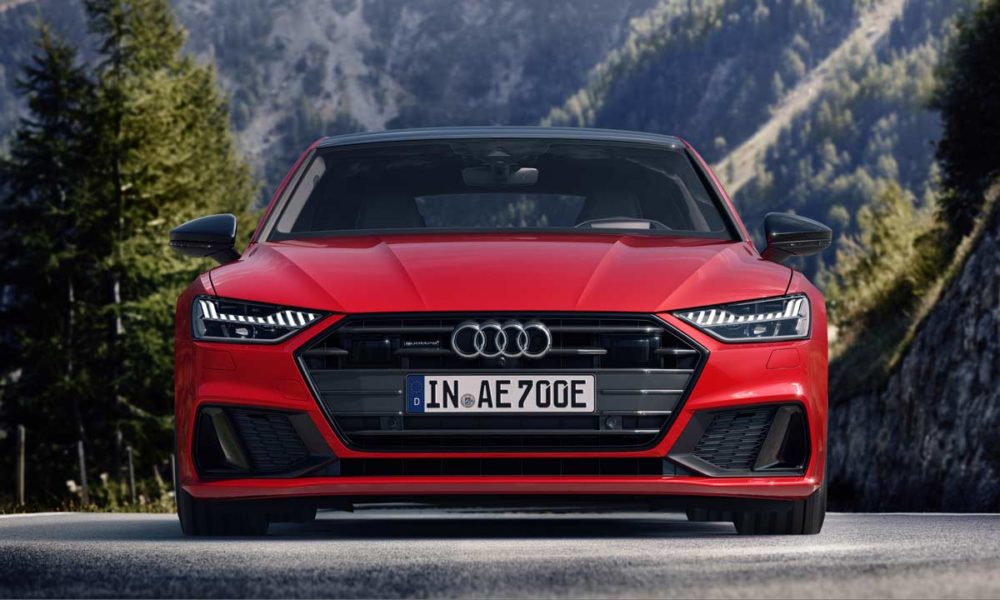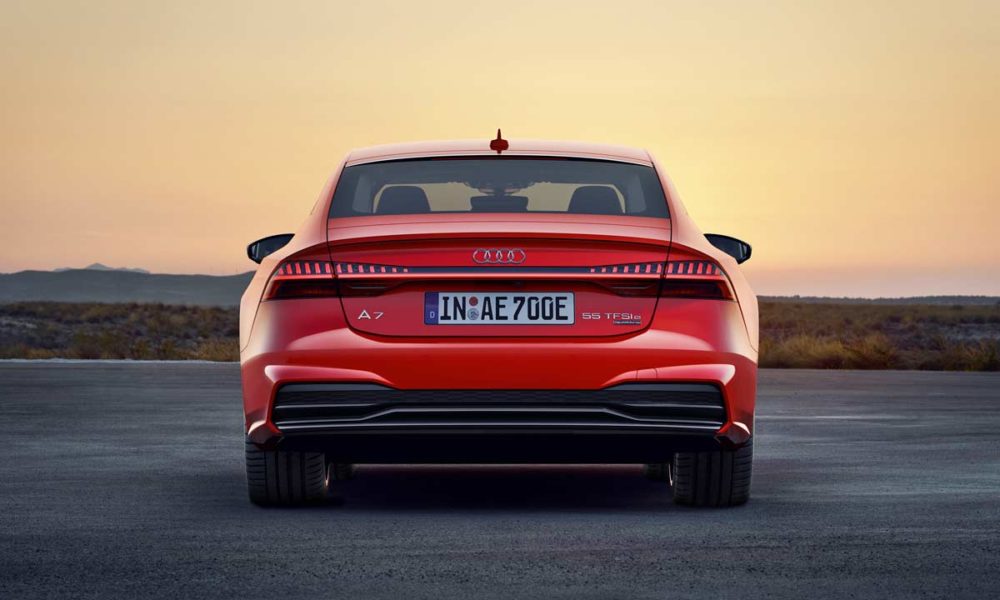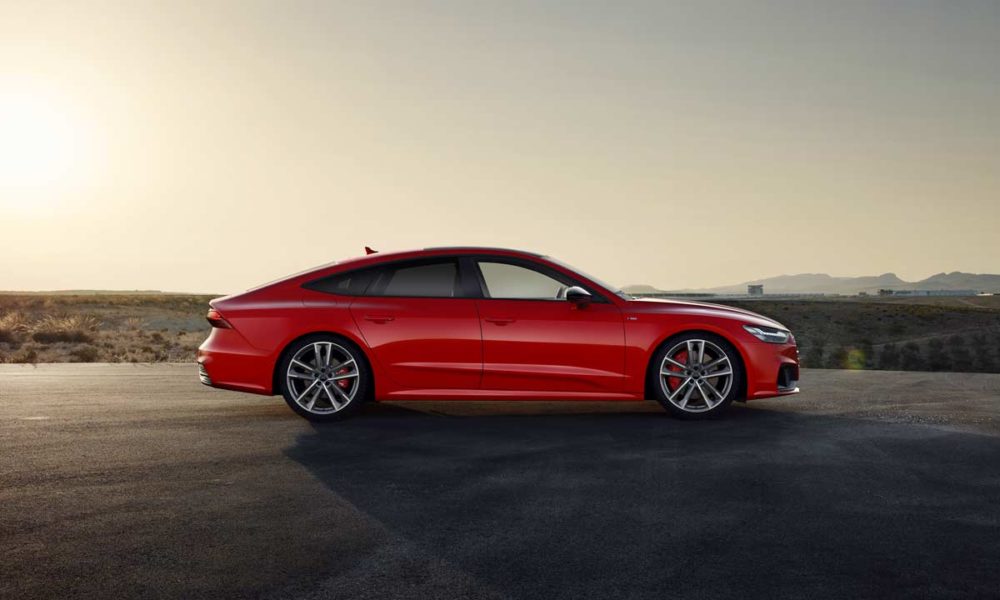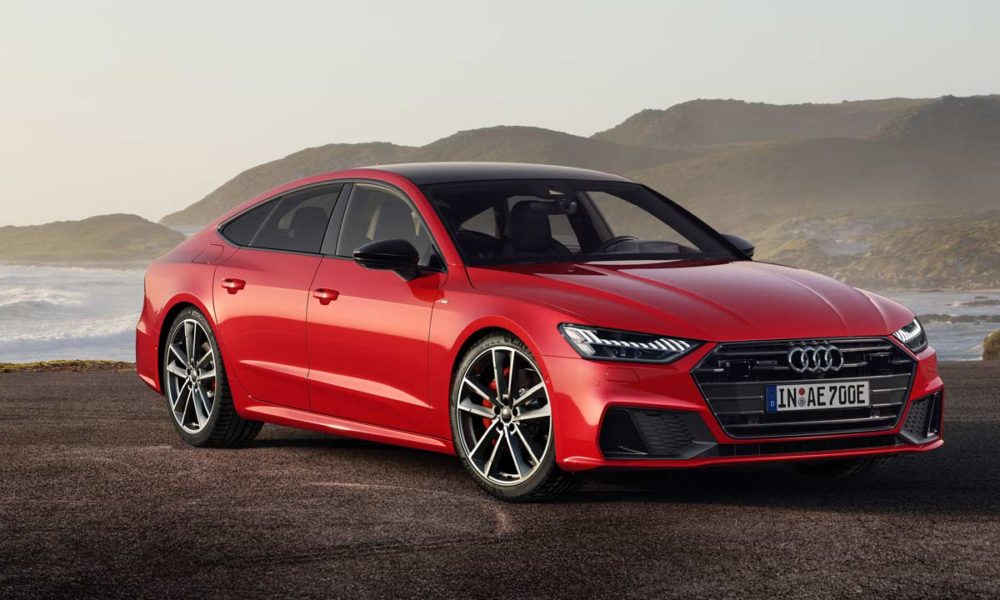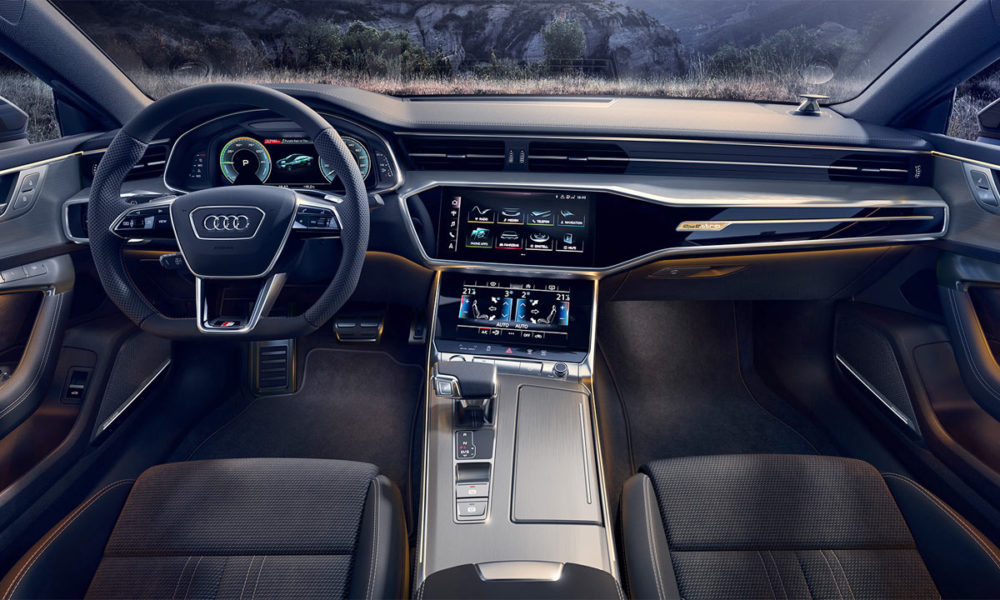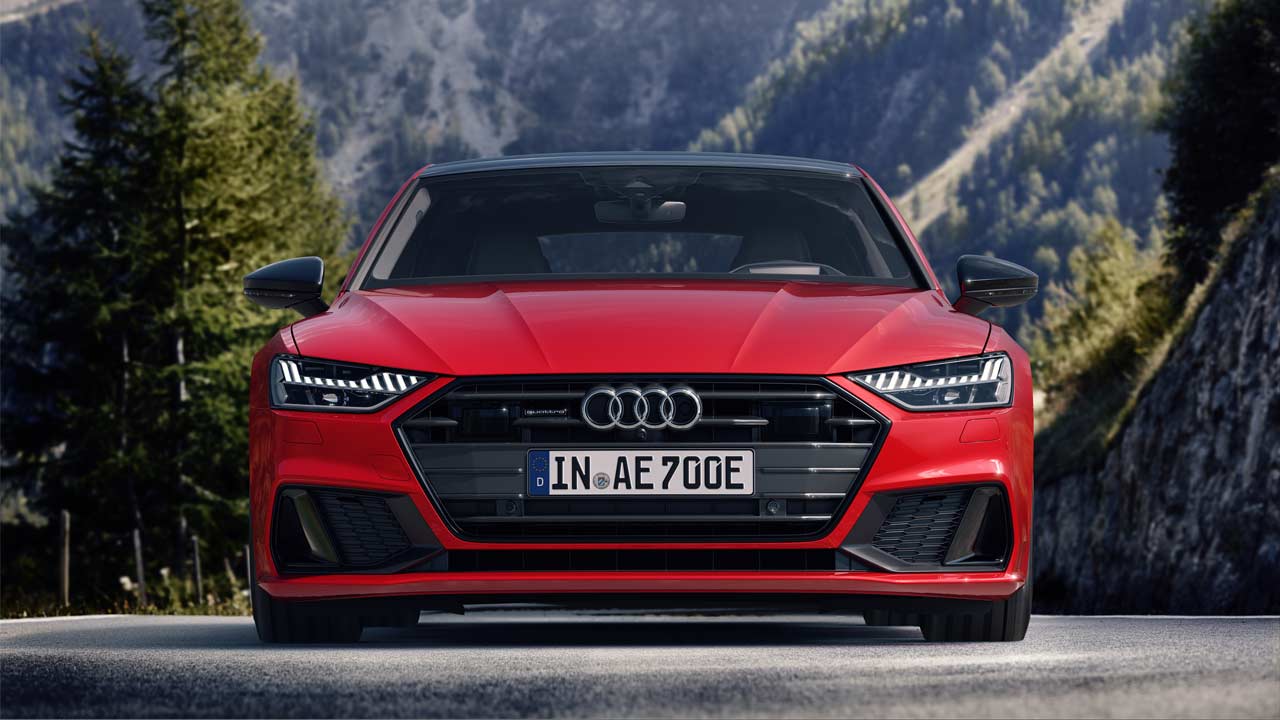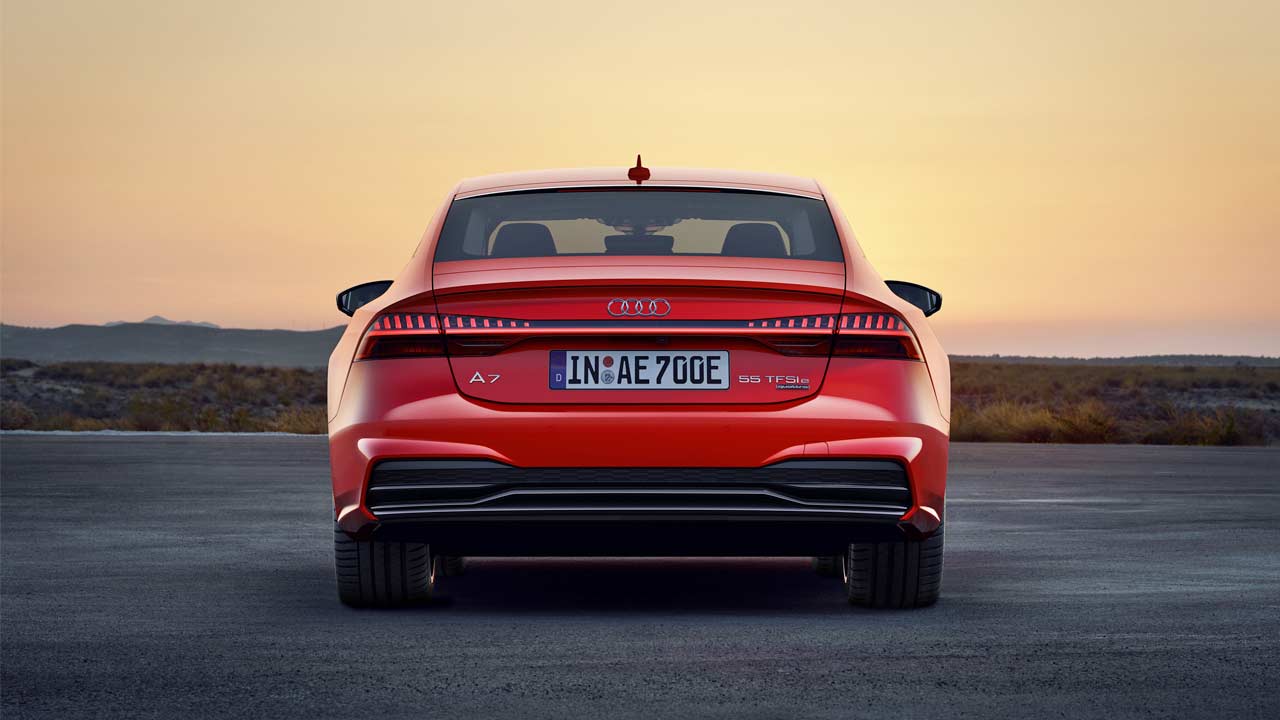That’s a long name indeed. The second generation Audi A7 Sportback has now got a plug-in hybrid sibling, with order books open in Germany at a base price of €77,850.
Visually, it doesn’t look all that different from its regular variants; the standard S line exterior package combined with the black styling package and the privacy glazing add a sporty touch. HD Matrix LED headlights, 19-inch multi-spoke wheels and red brake calipers are all standard too.

Interiors get sport seats, four-zone automatic AC, and Audi virtual cockpit with PHEV-specific displays. The air conditioning works together with an efficient heat pump, enabling the car to make good use of the waste heat from the electric drivetrain.
In addition, the myAudi app lets the users check the battery and range status, program the charge timer, view the charge and consumption statistics, and set pre-entry temperate before setting off. The air conditioning compressor and the auxiliary heater are electrically powered. Depending on the optional equipment chosen, the same (app functionalities) applies to the seat and steering wheel heating, heating of the windshield, rear window and mirrors, and seat cooling.

As for the business end, a 2.0-litre (1,984 cc) 4-cylinder turbocharged gasoline engine is combined with an electric motor. The ICE delivers an output of 185 kW (252 metric hp) and 370 Nm (272.9 lb-ft) of torque, while the e-motor has a peak output of 105 kW (143 metric hp) and a peak torque of 350 Nm (258.1 lb-ft). Together with the separating clutch, it is integrated into the 7-speed S tronic transmission to transfer the drive torque to quattro AWD system.
The total system output, however, is 270 kW (367 metric hp), and a maximum system torque of 500 Nm (368.8 lb-ft) is available at 1,250 rpm. The A7 PHEV is claimed to accelerate from 0 to 100 km/h (62.1 mph) in 5.7 seconds and reaches a top speed of 250 km/h (155.3 mph). Audi says that the PHEV can drive up to 135 km/h (83.9 mph) in EV mode.
The 14.1 kWh lithium-ion battery pack comprises 104 pouch cells and is located underneath the luggage compartment floor. To maintain the battery’s temperature, its cooling loop is connected to both the coolant loop for the climate control system and the low-temperature cooling loop into which the electric motor and power electronics are also integrated. Audi claims a maximum usable luggage capacity of 1,235 litres with the rear seat folded down.
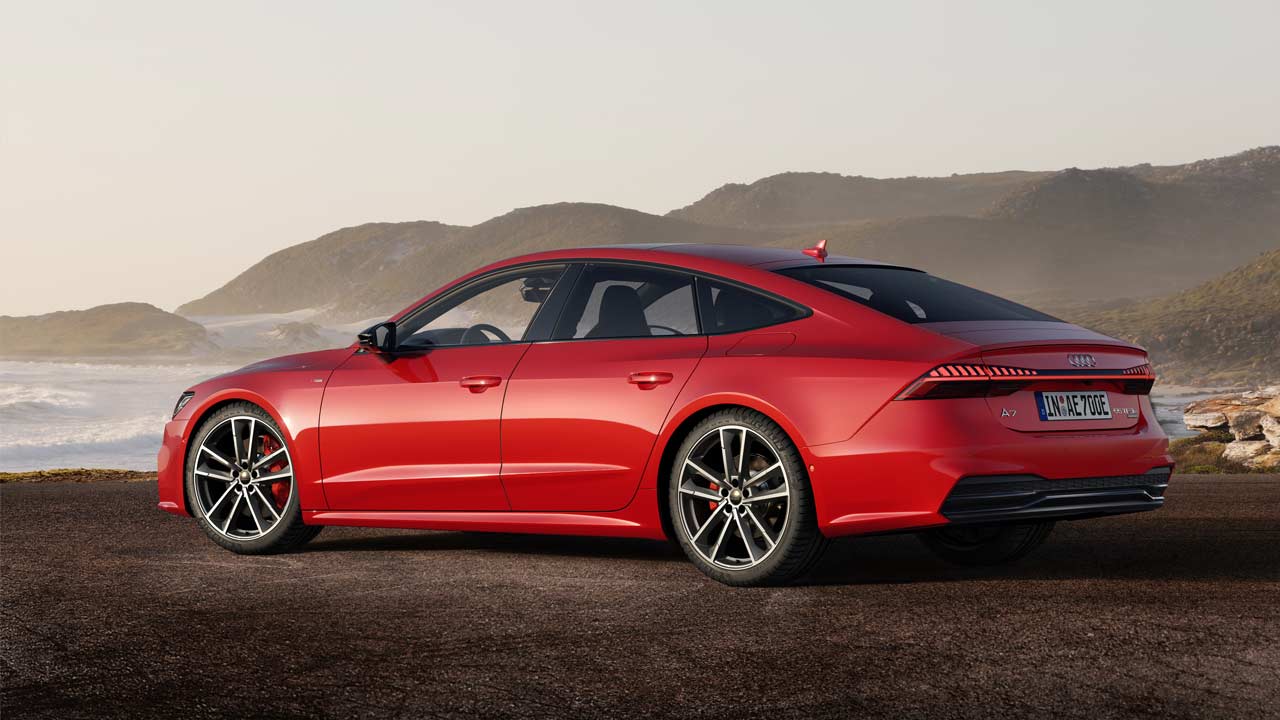
Modes
The A7 PHEV starts by default in EV mode and remains so as long as the driver does not depress the accelerator past a variable, perceptible pressure point. There’s also a Battery Hold mode, where the drive management system holds battery capacity at the current level so that a certain distance can later be covered fully electrically, for instance.
The Hybrid mode is activated either automatically referring to the route in the navigation system or by the driver via the mode button. In this mode, the A7 PHEV uses the interplay between the electric motor and the ICE to complete as many driving segments as possible electrically. The stop-and-go traffic in cities can be driven electrically for the most part.
Depending on the situation, the system chooses between freewheeling with the engine switched off and coasting recuperation. Up to 35 kW of power can be recovered with the latter. The electric motor is responsible for all light braking up to 0.1 g, i.e. the majority of braking in everyday driving. A maximum of 80 kW of electrical energy is generated via braking recuperation at a deceleration of up to 0.2 g.
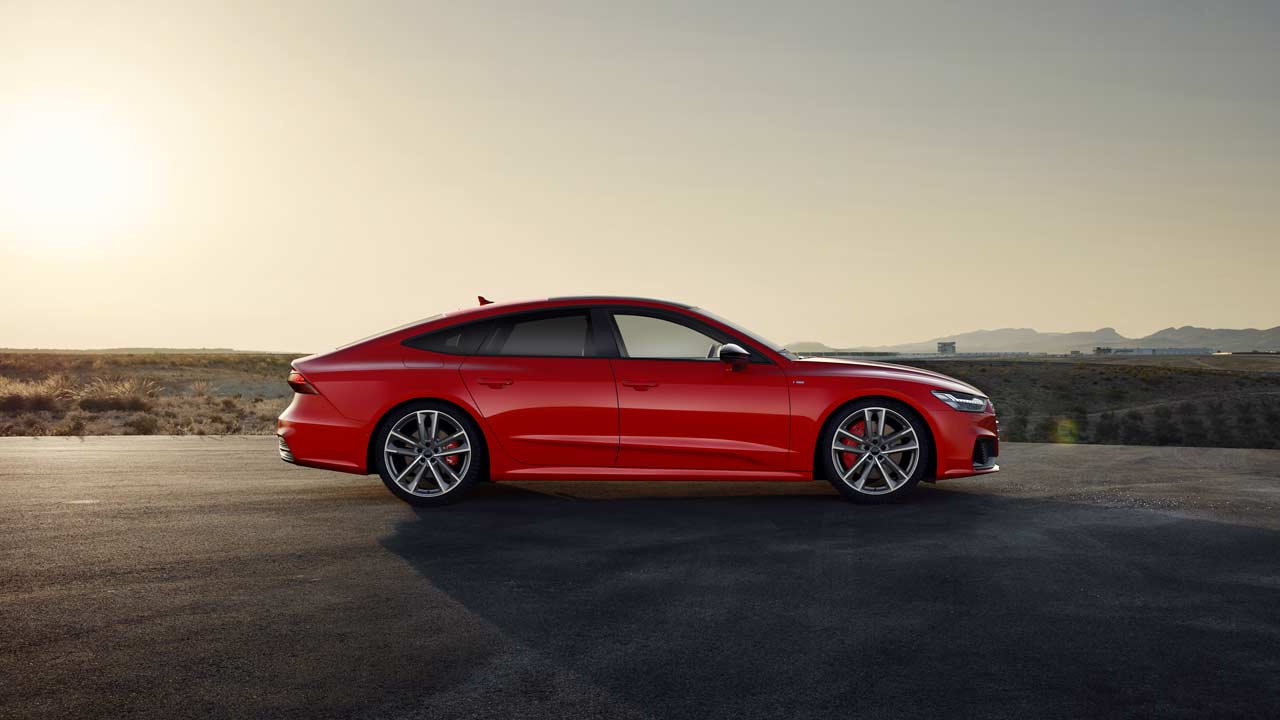
Predictive strategy
For maximum efficiency, the A7 uses predictive operating strategy. It uses information from the predictive efficiency assist also found in other Audi mid- and full-size models. If route guidance is active in the MMI navigation system, the predictive operating strategy controls the drivetrain so that the last urban section of the route can be driven exclusively electrically. If the car approaches a town, the drive management charges the battery so that the last urban section can be driven electrically.
The predictive efficiency assistant adjusts coasting recuperation behavior to the driving situation at hand. It uses the predictable route data from the navigation database and monitors the distance to the vehicle ahead via signals from the camera and radar. Depending on the situation, the system chooses predictively between freewheeling with the engine switched off and coasting recuperation. When the adaptive cruise control (ACC) is active, the PEA supports the driver by automatically braking and accelerating.
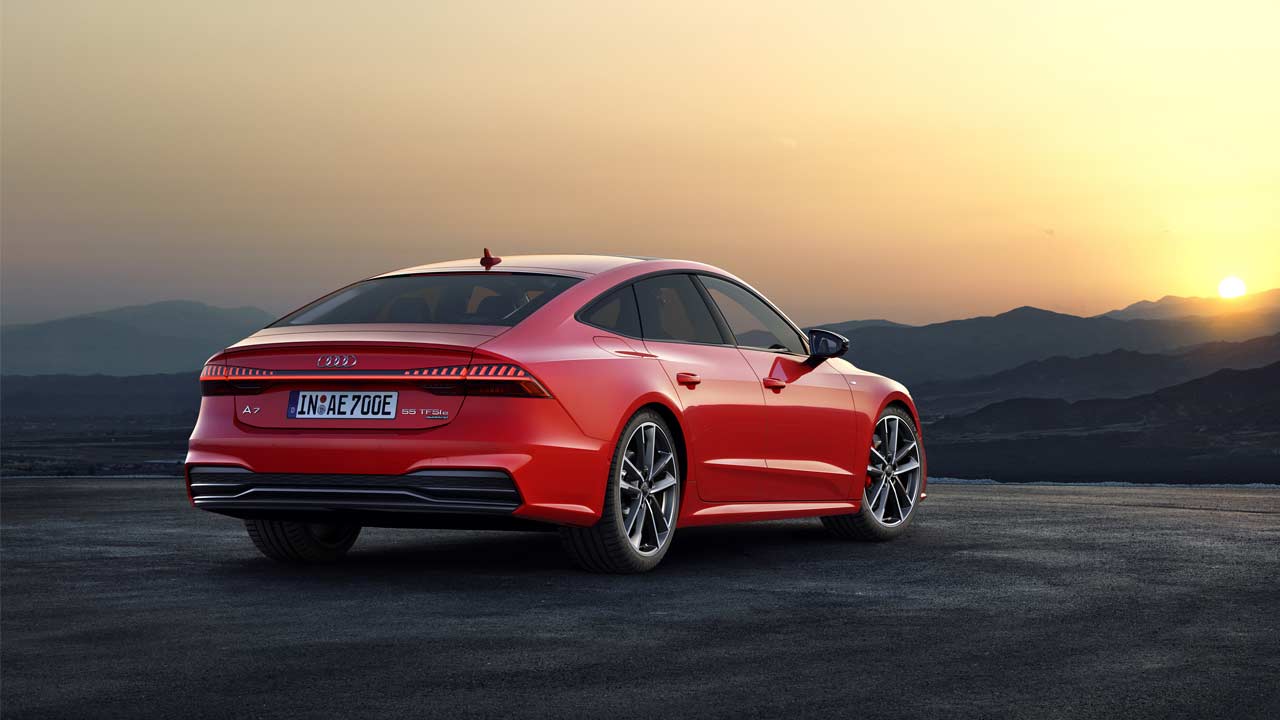
As a company car, the plug-in hybrid model is subject to a lower tax rate in Germany because its electric range as per the WLTP cycle is more than 40 km (24.9 mi).
The charging system compact comes standard with the A7 Sportback 55 TFSI e quattro. A Mode 3 cable with Type 2 plug for use at public charging terminals is available as an option. A full charge at a 3-phase CEE industrial outlet with 400 volts and 16 amperes per phase takes approximately 2.5 hours. The vehicle charges with a maximum of 7.4 kW. A 230-volt household outlet can recharge an empty battery fully overnight in approximately 7 hours, Audi said.
Also Read: New Audi RS 7 Sportback looks very angry

Leave a Reply
Note: Comments that are unrelated to the post above get automatically filtered into the trash bin.
